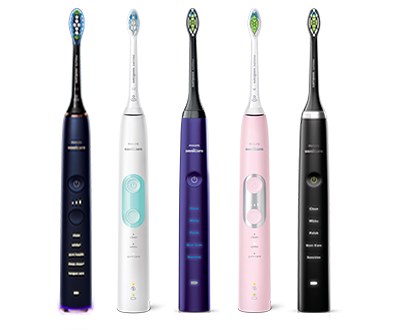4 min. read
If you’re feeling like your gums might not be in peak condition, you’re not alone. Many Americans experience gingivitis but the good news is that with a few key steps and quick action it's entirely treatable.
Here’s how to check if you have gingivitis, and the best way to restore your gums to great health.
Gingivitis is caused by the build-up of bacteria (also known as plaque) on and between your teeth. If you’re not brushing thoroughly or frequently enough, bacteria builds up and attacks the tissue on your gums, causing bleeding and inflammation.*
Your dentist might also refer to gingivitis as gum disease. It's actually the first stage of gum disease and if left untreated can lead to a more severe stage of gum disease known as periodontitis.
Gingivitis has some tell-tale signs that you should be on the lookout for during your everyday oral care routine. While healthy gums are normally light pink in colour, gums that have gingivitis are darker in colour, and can become inflamed and painful while brushing and flossing.
Sound familiar? If you've noticed bleeding or darkened gums it's important to act quickly to prevent further damage and periodontitis.
Not sure if you should be concerned? Your dentist can give you guidance if you're feeling unsure about your gum health.

As we've mentioned, gingivitis is treatable. So if you’re experiencing discomfort and bleeding gums when you brush and clean between your teeth, there are several steps you can take to restore your gums to health. Here's how to get rid of gingivitis.
Brushing your teeth is a bit like hitting a reset button on the plaque that has been building up since you last brushed your teeth. In between sessions, the bacteria naturally builds back up, which is why it’s so important to brush frequently. Ideally, you’ll want to brush twice a day, for two minutes each time to keep bacteria that causes gingivitis in check.
If you’re experiencing pain from gingivitis, try using a toothbrush designed especially for sensitive gums. A gentle toothbrush is designed to massage your gum line, take care of any tender areas and still give you an effective clean.
For a more thorough clean, consider using an electric toothbrush. It’s more effective at removing bacteria than a manual toothbrush.




HX6877/29
Whiter teeth. Gently does it.
Feel the difference of a gentle clean with our Pressure Sensor while whitening your teeth in 1 week.
See all benefitsAvailable in:
There are some things in life that you know you should do every day, but only manage to do some of the time. Cleaning in between your teeth is one of them. If this is you and you’re worried about gingivitis, it’s time to step up your game. Plaque not only builds up on your teeth, but in between your teeth too, so to combat it you’ll need to get in the habit of clean between your teeth every day.
The ideal time to clean between your teeth is right before you brush your teeth in the evening. This means that the fluoride in your toothpaste can then remove any debris you removed while flossing. See you later, gingivitis!
If you find that your gums are still inflamed and tender, even with extra and thorough care, it’s a good idea to schedule a check-up with your dentist. Your dentist can give you more tailored advice on how to manage and treat gingivitis, and take a closer look at your overall oral health.
Now that you know what gingivitis is and how to get rid of it it, be sure to keep brushing regularly and cleaning between your teeth to help your gums stay in great health.

You are about to visit a Philips global content page
Continue